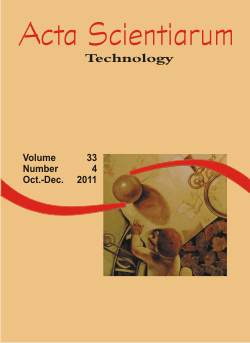Turbidity and free residual chlorine for monitoring plants comprised by septic tank followed by anaerobic filter
DOI:
https://doi.org/10.4025/actascitechnol.v33i4.9603Keywords:
anaerobic systems, effluent control, turbidity, free residual chlorineAbstract
Grouped monitoring data of 16 wastewater treatment plants was investigated. The plants were comprised by septic tanks followed by anaerobic filters and effluent disinfection with sodium hypochlorite. Removal of COD and total suspended solids was about 55%. This number was below values observed by the literature. However, the results were in accordance with recent findings in Brazilian full-scale plants. Coliform removal was about 3.0 log units with better results for Escherichia coli (3.5 logs). Best results were achieved with free residual chorine concentrations ranging from 2.0 to 2.5 mg L-1. Findings showed that turbidity is a useful parameter to estimate COD and TSS concentrations in the treated effluent. Free residual chlorine may also be applied to estimate coliform numbers.Downloads
Download data is not yet available.
Downloads
Published
2011-04-14
How to Cite
Silva, F. J. A. da, & Souza, R. O. de. (2011). Turbidity and free residual chlorine for monitoring plants comprised by septic tank followed by anaerobic filter. Acta Scientiarum. Technology, 33(4), 407–413. https://doi.org/10.4025/actascitechnol.v33i4.9603
Issue
Section
Civil Engineering
License
DECLARATION OF ORIGINALITY AND COPYRIGHTS
I Declare that current article is original and has not been submitted for publication, in part or in whole, to any other national or international journal.
The copyrights belong exclusively to the authors. Published content is licensed under Creative Commons Attribution 4.0 (CC BY 4.0) guidelines, which allows sharing (copy and distribution of the material in any medium or format) and adaptation (remix, transform, and build upon the material) for any purpose, even commercially, under the terms of attribution.
Read this link for further information on how to use CC BY 4.0 properly.











8.png)




